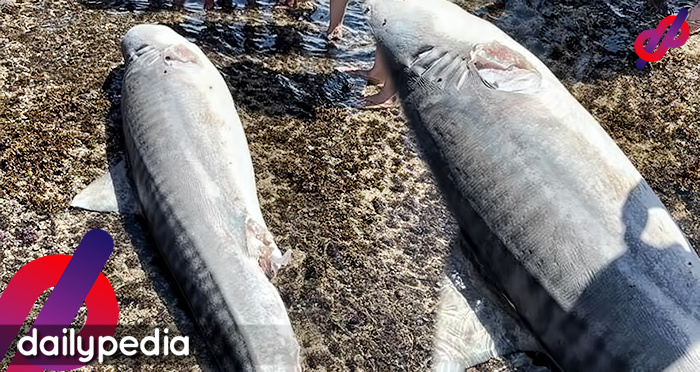- Sharks only attack humans when they are hungry, harassed, or just defending their territory
- The sharks are still alive while their fins are being removed and their bodies are thrown back into the ocean
- In China, shark fin soup is served to guests on social occasions as a symbol of a host’s status
Sharks are known as one of the most dangerous sea creatures, as we have seen on movies how they attack and kill their prey. In reality, sharks only attack humans when they are hungry, harassed, or simply defending their territory.
A Facebook page, Aux Traveler, posted photos of a dead shark taken at Magpupungko Island in Siargao. Definitely, the shark died because of finning as it was found with no fins.

A question was posted in the caption, “Tell me, is shark’s fin part of your diet?”
Shark finning is a practice of harvesting the lateral and dorsal fins and the lower tail fin of sharks. Most likely, sharks are still alive while their fins are being removed and their bodies are thrown back into the ocean to save weight and cargo space.
Tracing back history, this practice arose in China for the purpose of supplying fins for a shark fin soup served to guests on social occasions as a symbol of a host’s status. Because of global demand for shark fin soup, this has resulted in harvesting ten, or even more, million sharks in a year.
In 2011, some restaurants, globally, have removed shark fin soup in their menus and in 2012 it was no longer served at the official state functions in China. This was because of the campaign led by animal rights group and environmentalists discouraging the consumption of shark fin soup.
According to Filipino marine biologist Dr. A. A. Yaptinchay, Blacktip reef sharks helps in keeping fish population healthy.
“Reef sharks help in controlling sick, diseased, and genetically inferior individuals to maintain robust fish stocks. They also feed on mid-level carnivores to ensure that herbivore fishes can do their jobs in helping coral reefs grow better by eating algae,” noted Yaptinchay.
Netizens from Siargao claimed that people in Siargao don’t eat shark fins and speculated that someone not from Siargao has done it.
Janos Leo Gorgolon Andanar said, “I am a local Siargaonun and we never eat sharks fin at all. It’s not even a thing here in Siargao to eat sharks fin or the shark itself. With all the tourists coming into the island, maybe a non-local did this or someone just dumped this in the ocean and water current took it to the Magpupungko rock pool. Magpupungko is facing the Pacific Ocean.”
In another comment, he wanted authorities to be alerted for they don’t tolerate shark fin hunters.
“Make this big. This should end fast. The island already moved on from the wrath of dynamite fishers. Shark fin hunters have no place on this island either.”
An update from the Aux1 Traveler said that a news channel has already contacted him and hopes that it would bring awareness not only in Siargao but globally.



